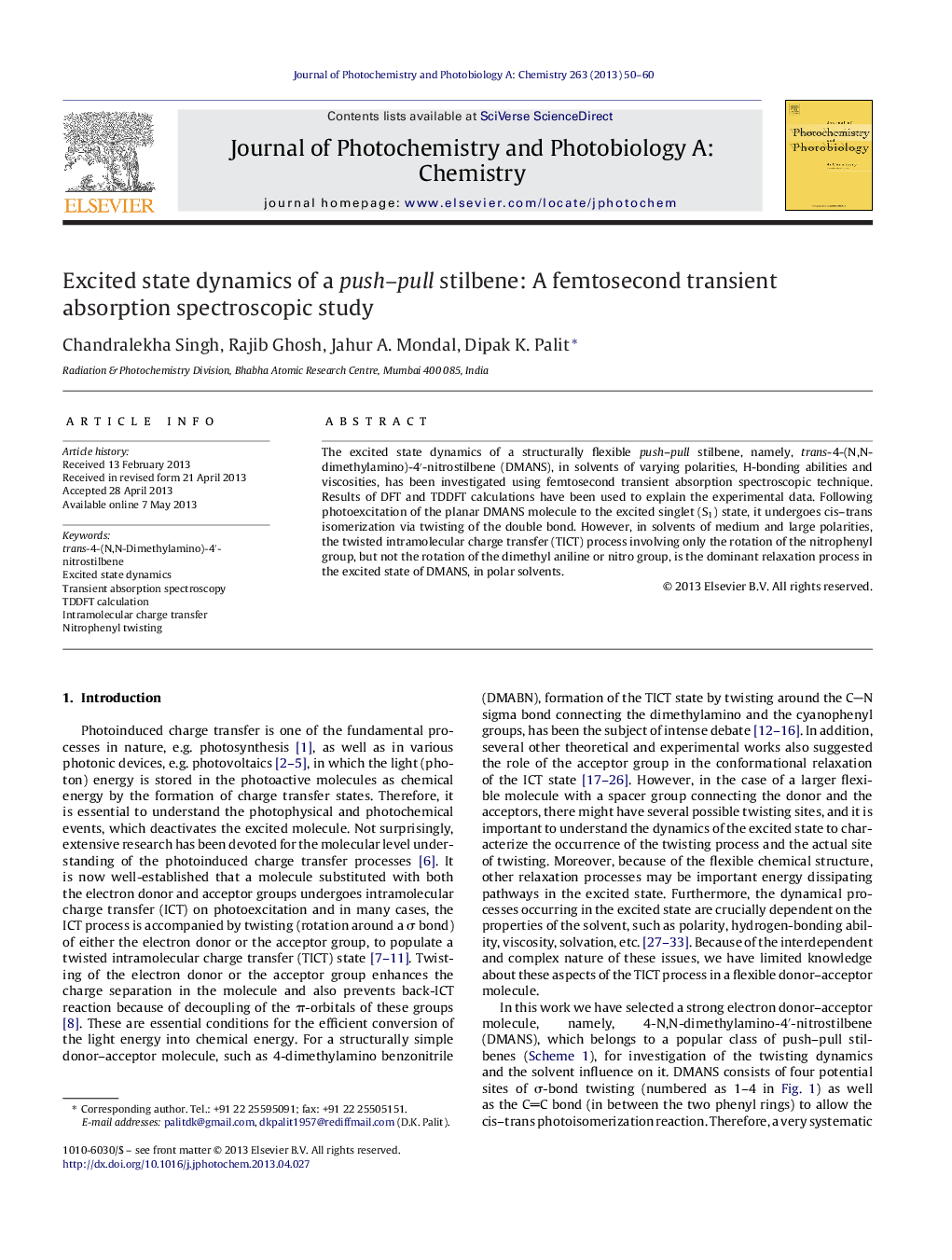| کد مقاله | کد نشریه | سال انتشار | مقاله انگلیسی | نسخه تمام متن |
|---|---|---|---|---|
| 27028 | 43995 | 2013 | 11 صفحه PDF | دانلود رایگان |

• Excited state dynamics of DMANS molecule has been studied using transient absorption spectroscopic technique and DFT and TDDFT calculations.
• In non polar solvents, DMANS molecule undergoes photoisomerization vis twisting of the double bond.
• In medium or large polarity solvents, twisting of the nitrophenyl group is the only relaxation process.
The excited state dynamics of a structurally flexible push–pull stilbene, namely, trans-4-(N,N-dimethylamino)-4′-nitrostilbene (DMANS), in solvents of varying polarities, H-bonding abilities and viscosities, has been investigated using femtosecond transient absorption spectroscopic technique. Results of DFT and TDDFT calculations have been used to explain the experimental data. Following photoexcitation of the planar DMANS molecule to the excited singlet (S1) state, it undergoes cis–trans isomerization via twisting of the double bond. However, in solvents of medium and large polarities, the twisted intramolecular charge transfer (TICT) process involving only the rotation of the nitrophenyl group, but not the rotation of the dimethyl aniline or nitro group, is the dominant relaxation process in the excited state of DMANS, in polar solvents.
Simplified potential energy surface (PES) diagram, representing the configurational relaxation dynamics in the excited singlet (S1) state of DMNAS in cyclohexane (CH), ethyl acetate (EA) and DMSO. In CH, the main relaxation process of the planar local excited state, S1(E*), is the trans–cis isomerization via the phantom state, P* and in polar solvents, the nitro-twisting process populating the S1(TICT) state. Downward transitions indicated by the arrows A, B and C represent emission processes originating from the S1(E*), S1(TICT) states occurring in the region of ~490 nm and 630–900 nm, respectively, in different solvents. Bent arrows indicate the pathways of configurational relaxation.Figure optionsDownload as PowerPoint slide
Journal: Journal of Photochemistry and Photobiology A: Chemistry - Volume 263, 1 July 2013, Pages 50–60